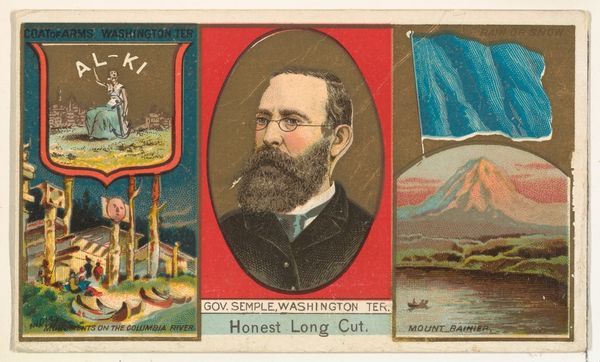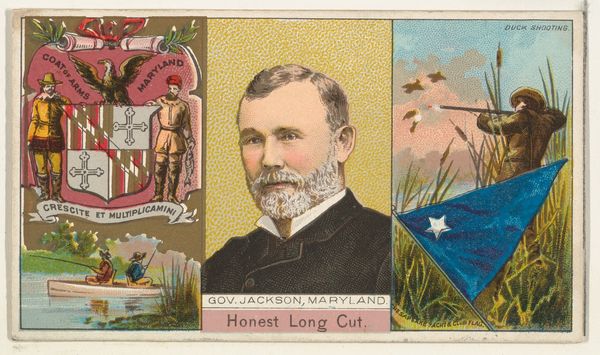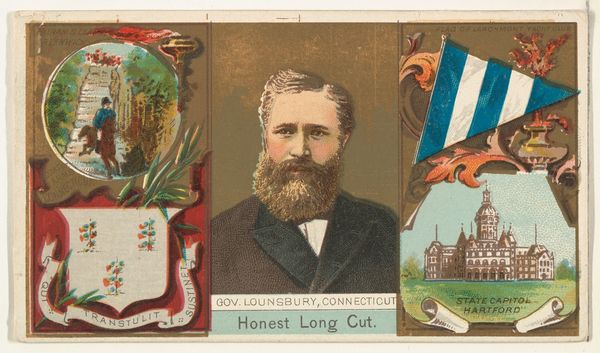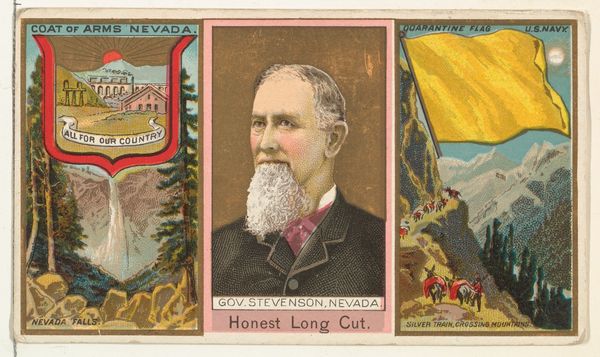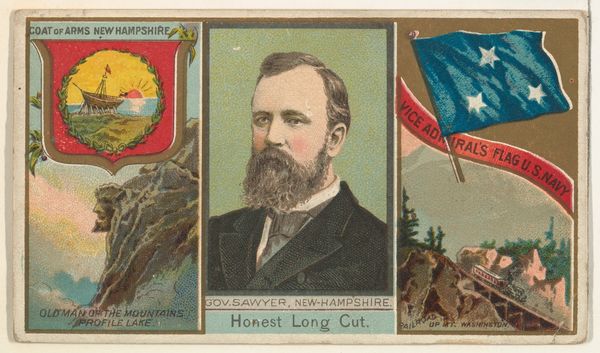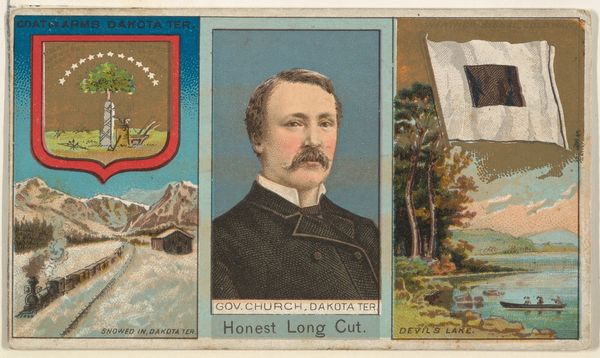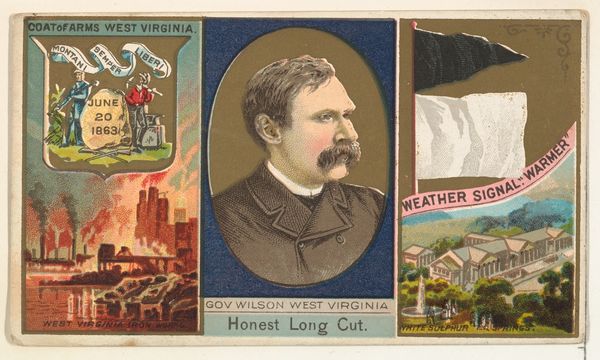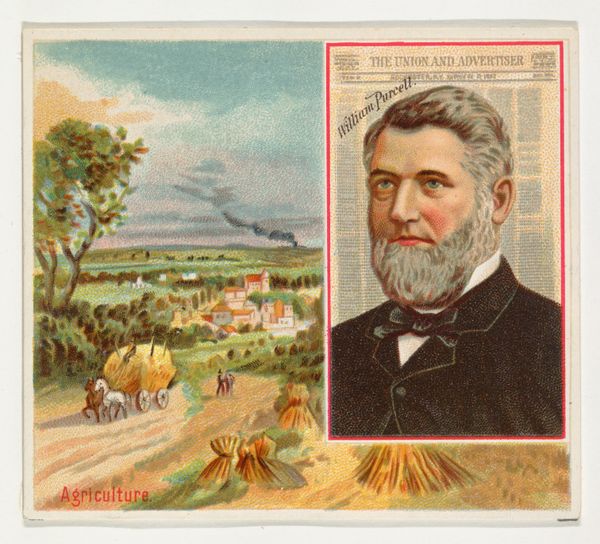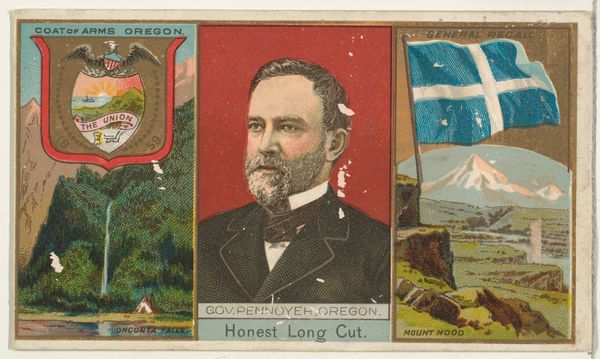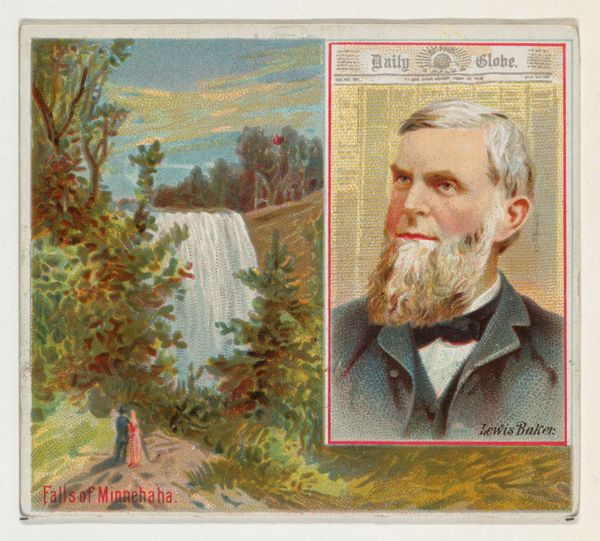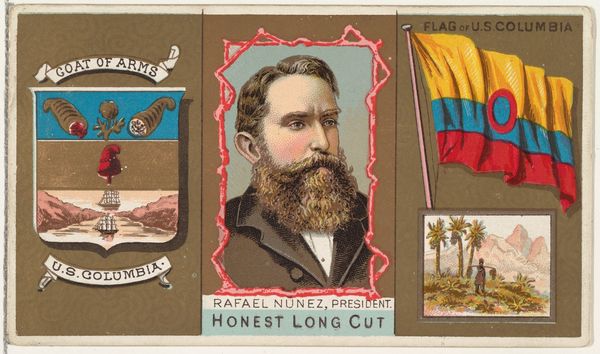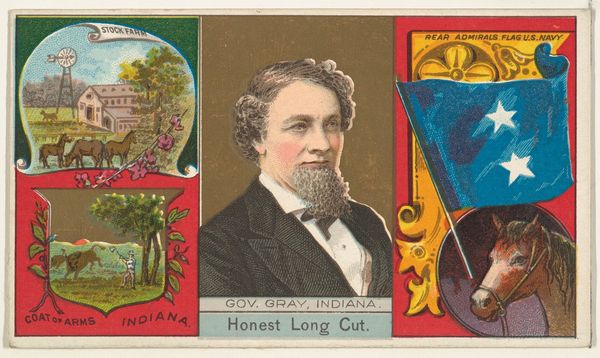
Governor Waterman, California, from "Governors, Arms, Etc." series (N133-1), issued by Duke Sons & Co. 1885 - 1892
0:00
0:00
drawing, print, watercolor
#
portrait
#
drawing
# print
#
caricature
#
caricature
#
watercolor
#
19th century
#
men
#
watercolour illustration
#
history-painting
Dimensions: Sheet: 2 9/16 × 4 5/16 in. (6.5 × 11 cm)
Copyright: Public Domain
This late 19th-century chromolithograph was made by W. Duke, Sons & Co. as part of their "Governors, Arms, Etc." series. These cards were originally included in packages of Duke's "Honest Long Cut" tobacco. The card presents a tripartite vision of California under Governor Waterman. The state's coat of arms depicts Minerva, the Roman goddess of wisdom, alongside a grizzly bear, and the word "Eureka", a Greek expression that translates to "I have found it." The image draws on classical antiquity to legitimize California’s place within the American Empire. Adjacent is a portrait of Waterman, while on the right, we see a flag atop Yosemite Falls. These images create a sense of California as a land of both natural wonder and political authority. Yet, this landscape was built on the displacement and erasure of Indigenous peoples, obscuring the violence inherent in the colonial project. While romanticizing expansion and progress, it omits the stories of those who were dispossessed. What does it mean to "find" a place that was already inhabited? What is gained, and what is lost, in such a discovery?
Comments
No comments
Be the first to comment and join the conversation on the ultimate creative platform.

